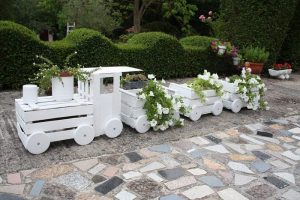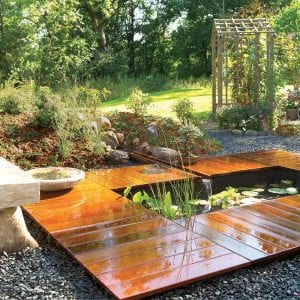Many people enjoy turning rough stones into shiny gems through rock tumbling. Commercial rock tumbler kits can be expensive or limited, which inspires some hobbyists to create their own. Building a DIY rock tumbler from common household materials is quite feasible with a bit of creativity. In this guide, we’ll explain what a rock tumbler is, why it’s used, provide a step-by-step construction tutorial, compare DIY tumblers to store-bought kits, and cover how to use your tumbler efficiently. Safety tips and maintenance advice are also included so you can polish stones at home confidently.
Contents
What Is a Rock Tumbler and Why Use One?
A rock tumbler simulates river or ocean processes to polish and smooth rough rocks. A motorized base spins a barrel or drum containing rocks, abrasive grit, and water. As the barrel revolves, the rocks inside fall over each other, grinding sharp edges and rough surfaces. Abrasion rounds and polishes stones, revealing their colors and patterns.
Rock tumblers are small rotational drums that polish and smooth rocks. Though slow—a whole tumbling cycle might take weeks—it produces stunning results that would take nature years.
For many reasons, amateurs, jewelers, and educators love rock tumbling. Polishing regular stones makes them shine like gems. This makes making decorative stones for jewelry, collections, and home décor entertaining. It’s a fun, hands-on pastime that teaches patience and earth science. Tumblers are used to teach geology and speed weathering.
Finally, it’s a creative outlet—you may try different rocks and polishing methods to make unique jewels. A rock tumbler makes DIY gem-making fun, whether you want to make jewelry or just admire the polished stones.

Building a DIY Rock Tumbler Step-by-Step
Building your own rock tumbler is a rewarding project that uses simple materials you likely already have. The concept is to rotate a sealed container filled with rocks and abrasive grit using a slow-turning motor or drill.
Materials:
- Sturdy, sealable container (wide-mouthed jar or coffee can)
- Two rods (metal, PVC, or wooden dowels)
- Piece of wood, bucket, or box for the frame
- Rocks to tumble
- Water
- Abrasive grit (preferably silicon carbide)
Tools:
- Variable-speed electric drill or small motor
- Drill bit and cordless drill
- Screws, brackets, or strong adhesive
- Rubber bands, duct tape, or rubber tubing (for traction)
- Colander or sieve (for cleanup)
Steps:
Step 1: Build the Roller Base
Drill holes into your bucket or frame to insert the two rods parallel to each other so the container can roll on top of them. One rod connects to the motor or drill and the other spins freely.
Step 2: Add Traction to the Rods
Wrap rubber bands, rubber tubing, or tape around the rods to prevent the container from slipping. This ensures a consistent and smooth rotation.
Step 3: Attach the Power Source
Secure the drill to the frame and clamp it to the end of the drive rod, using a low-speed setting for controlled rotation. If using a motor, connect it with tubing or belts to rotate the rod.
Step 4: Test the Rotation (Empty)
Place the empty container on the rods and run the drill or motor briefly to check for smooth and stable movement. Adjust spacing or traction if it slips or wobbles.
Step 5: Load the Rocks and Abrasive
Add similar-hardness rocks into the container, filling it halfway, then add coarse grit and just enough water to cover the rocks. Seal the lid tightly to prevent leaks.
Step 6: Tumble and Observe
Run the tumbler for about a week, checking occasionally to release built-up gas or adjust moisture levels. Listen for steady tumbling sounds and add water if the slurry thickens too much.
Step 7: Progress Through Grit Stages
After each stage, rinse the rocks and container thoroughly before moving to finer grits. Repeat the tumbling process weekly, finishing with a polishing compound to achieve a shiny surface.
Step 8: Finish and Enjoy
Once polished, rinse the stones and dry them completely. Your DIY rock tumbler has now produced smooth, glossy stones ready for crafting, decor, or collecting.
Comparing DIY and Commercial Rock Tumbler Kits
Making your own rock tumbler is gratifying and cost-effective, but how does it compare to using a commercial kit? Each approach has its benefits and limitations.
Commercial rock tumbler kits are designed specifically for rock polishing and are generally user-friendly. They include a motorized base with a proper rubber barrel, along with starter packs of abrasive grit and polish. One advantage is reliability and performance consistency. Quality tumblers are built to run for weeks continuously without failing.
The barrels seal well to prevent leaks, and rubber barrels help dampen noise. Beginner kits come with clear instructions and everything needed to start, which is convenient. However, entry-level models often have small barrel capacity and motors that may not last if run continuously. High-end models can be expensive, ranging from $70 to over $200 USD.
DIY rock tumblers offer affordability and customization. By building your own, you can scale the size to whatever you need and experiment with speed, barrel type, and other aspects. The DIY route is a great learning experience in mechanics and materials. Many enthusiasts enjoy the challenge of making their own equipment.
The trade-offs include convenience and potentially less consistent results. Homemade tumblers can be noisier, and there’s a greater risk of leaks if not constructed carefully. You also need to monitor a DIY machine for overheating or misalignment. Some hobbyists start with a kit and later build a larger homemade tumbler, or vice versa. The end goal is the same – beautifully polished rocks.

Using Your Rock Tumbler Efficiently
Once you’ve built your DIY rock tumbler, using it effectively is crucial to get the best results. Rock tumbling is as much about technique and patience as it is about the machine. This section covers how to choose good rocks, load the tumbler, and manage each stage efficiently.
Choosing the Right Rocks
Not all rocks polish equally well. The best are hard (about 6–7 on the Mohs hardness scale or higher) and non-porous. Examples include quartz, agate, jasper, and chalcedony. Softer rocks like sandstone or chalk may break apart. It’s best to tumble rocks of similar hardness together to avoid one grinding the other to dust. Mixing sizes can help tumbling action, but avoid too big a disparity.
Loading the Tumbler
Fill the barrel half to two-thirds full with your chosen rocks. If needed, add filler media like pottery shards or small pebbles. Add your coarse grit and water just to cover the rocks. The slurry should be heavy-cream consistency. Seal the lid tightly.
Tumbling Process and Timeline
Run the tumbler for the coarse grinding stage for about seven to ten days. Check daily to release gas and adjust water levels. After a week, rinse the rocks and barrel before the next stage. Use medium grit for another week, then fine grit for one more week. Finally, do a polishing run with a polishing compound for the last week. Thorough cleaning between stages is vital to avoid contamination.
Finishing Up
After polishing, pour out the contents into a colander and rinse the polished stones. Dry them and enjoy the results. Keep notes on rock types and run times to refine future batches.
Creative Uses for Polished Rocks
Once your rocks are polished, the possibilities for using them are endless. From personal accessories to educational tools, these smooth stones can be both functional and decorative.
Jewelry and Accessories
Tumbled stones are perfect for making pendants, earrings, bracelets, or keychains. Drill small holes or wire-wrap stones to make unique jewelry pieces. You can also glue pendant caps or earring bails onto stones for easy assembly.
Home Décor and Display
Fill a glass vase or bowl with polished stones as a table centerpiece. Use stones in aquariums or as a top layer in potted plants. Create fridge magnets by gluing magnets to the stones. Larger stones can serve as paperweights or display pieces on a shelf.
Crafts and Art Projects
Make mosaics by arranging stones into patterns and gluing them onto a backing. Decorate picture frames or mirrors by affixing polished stones around the edges. Drill holes and string stones for wind chimes. Embed stones in resin to create coasters, paperweights, or jewelry.
Educational and Collectible Uses
Use polished rocks to start a rock and mineral collection. Label each stone and create a display for geology lessons. Teachers can demonstrate erosion and the rock cycle. Some people paint messages on flat stones and leave them for others to find as a kind gesture.
Safety Tips and Maintenance for Homemade Rock Tumblers
To keep your DIY rock tumbler running safely and effectively, regular checks and careful handling are essential. Follow these simple practices to extend its lifespan and avoid accidents.
- Place the tumbler on a stable, level surface to prevent tipping or walking caused by vibrations.
- Avoid overloading the barrel; stay within the fill level and motor capacity.
Monitor for overheating by checking the motor or drill temperature and running in intervals. - Keep all electrical components dry and use a drip tray to catch spills.
- Reduce noise by placing the setup on a foam pad or lining a box with foam or rags.
- Regularly inspect rods, screws, belts, and bearings, and apply oil to moving parts if needed.
- Thoroughly clean the barrel, lid, and rocks between each grit stage; dispose of slurry without pouring down drains.
- Handle abrasive grit and rock dust carefully by wearing gloves and eye protection.
- Keep children and pets away from the operating tumbler; supervise any involvement for educational purposes.
Conclusion
Creating a DIY rock tumbler is a cost-effective and rewarding way to explore geology and craft. With a few household materials, you can build a working tumbler that smooths and polishes stones over time. The process teaches patience, creativity, and practical skills. Whether for jewelry, decor, or learning, polished rocks offer endless possibilities.
One project you can use your polished pebbles for is bathroom flooring. Check out our pebble shower floor guide!






